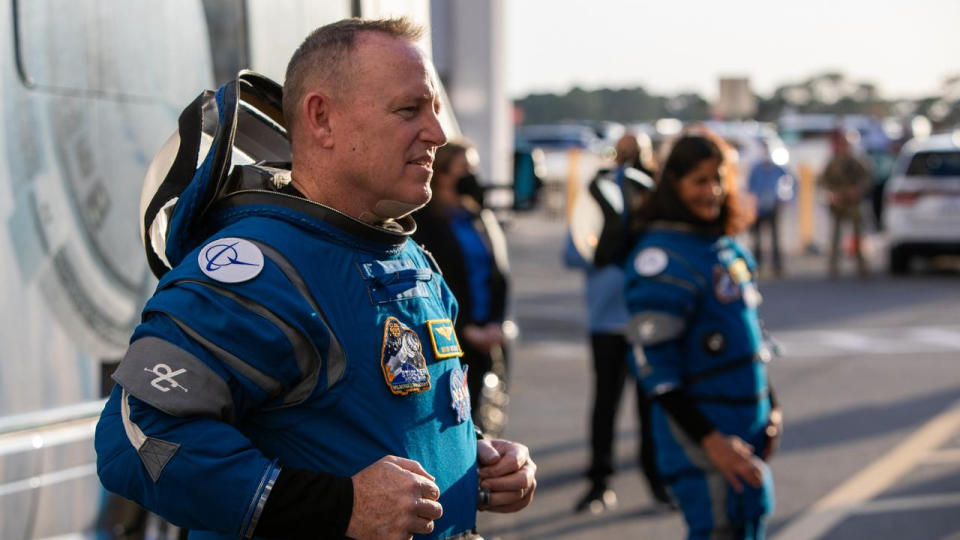The first astronaut mission aboard Boeing’s Starliner is grounded for an indefinite period.
Starliner will not take off on Saturday (May 25) as planned, which was the latest launch date after several delays in recent weeks. NASA officials announced the delay late Tuesday (May 21), without yet providing a specific reason. But the team has been examining a small leak of helium in the Starliner thruster for the past few weeks.
“The team has been in meetings for two days in a row, assessing flight rationale, system performance, and redundancy. Work is still ongoing in these areas, and the next launch opportunity is still being discussed,” read the update e-mails in part.
The Starliner Crew Flight Test (CFT) mission to the International Space Station or ISS, as NASA and Boeing officials have repeatedly emphasized, is developmental. In previous briefings, officials say they always emphasize safety over schedules. NASA astronauts CFT Butch Wilmore and Suni Williams, both former US Navy test pilots, have said the same thing.
Related: 2 astronaut taxis: Why NASA wants Boeing’s Starliner and SpaceX’s Dragon
Starliner appeared ready to fly on May 6, but the countdown was stopped just two hours before liftoff, as Wilmore and Williams were placed into the spacecraft. (The helium leak was also going on during this time, but at that time the engineers did not consider it a problem to launch.)
The delay was eventually called after United Launch Alliance (ULA) found an oxygen relief valve issue on the Atlas V rocket set to launch the duo from the Cape Canaveral Space Force Station on the coast near Orlando, Florida. The Atlas V has been in flight missions since 2002 with 100% successful launches, but CFT will be the first crewed launch for the rocket.
ULA decided the safer option was to face the “buzzing” valve — it was opening and closing rapidly — without astronauts on board. After several hours of evaluation, the team chose to tow the stacked rocket back to shelter to replace the valve.

While at the ULA facility, the team scrutinized the helium leak and announced delays, first to May 21st, and then to May 25th. “The additional time allows teams to further assess a small helium leak in the Boeing Starliner spacecraft service module traced to a. flange on one reaction control system thruster,” NASA officials wrote in a previous update.
Helium is a non-flammable gas and is not a hazard during ground operations, but proper pressure is required to send propellant to Starliner’s dozens of engines. This helium leak was found in a part of the spacecraft used for small maneuvers in orbit, according to numerous media reports.
Starliner is only allowed to dock to one port of the ISS’s Harmony module on this test mission, meaning NASA must preserve that spot open for CFT. If the setup takes several weeks, it could be difficult for NASA to keep the site open since the ISS hosts cargo missions and other astronauts. That’s probably one factor behind the uncertainty surrounding the launch date.
Williams and Wilmore remained in quarantine because of the launch delays, flying back to NASA’s Johnson Space Center in Houston in mid-May. NASA has not said whether the astronauts will emerge from their quarters, but if the delay continues for several weeks it is likely that they will leave to focus on other CFT training duties.
RELATED STORIES:
— Boeing’s Starliner rolls off launch pad to replace ‘buzzing’ rocket valve (photo)
— Meet the crew launching the 1st Boeing Starliner astronaut flight
– Boeing Starliner spacecraft will not fly private missions yet, officials say
Development delays often arise in new space programs. NASA commissioned Boeing and SpaceX in 2014 to send astronauts to the ISS using commercial crew vehicles. The deadline for astronaut flights at that time was 2017.
SpaceX, borrowing from its Dragon cargo design that began flights in 2012, successfully flew its first Crew Dragon with astronauts in 2020. Starliner’s lasted much longer.
Starliner failed to reach the ISS during its first uncrewed test flight in 2019 due to a software glitch that sent the spacecraft into the wrong orbit. A follow-up flight arrived safely in 2022 after battling dozens of issues, as well as other delays in part due to the outbreak of the coronavirus pandemic in March 2020.
CFT was further delayed in 2023 after the team discovered that the capsule’s parachute could carry less load than expected, and discovered flammable tape covering much of the wiring in the spacecraft. Those issues are behind the team, however, NASA and Boeing officials said in the spring.